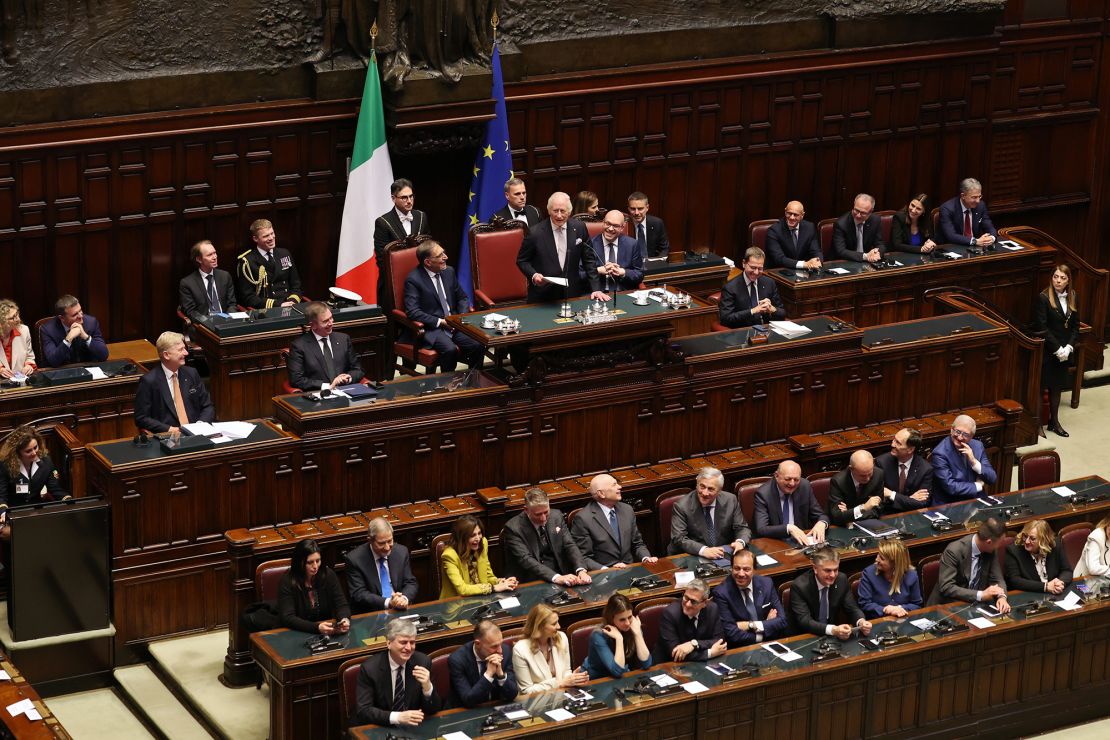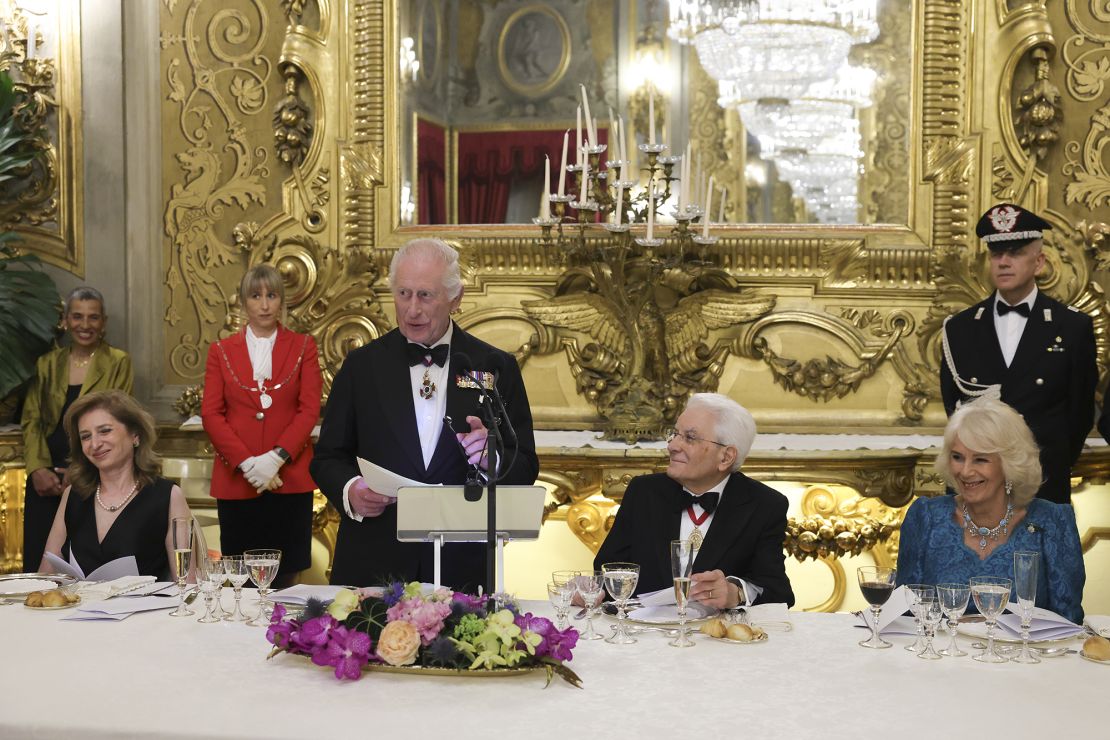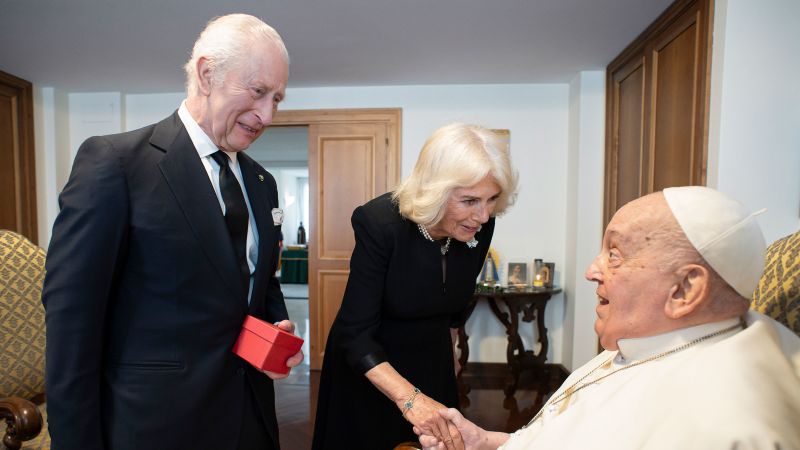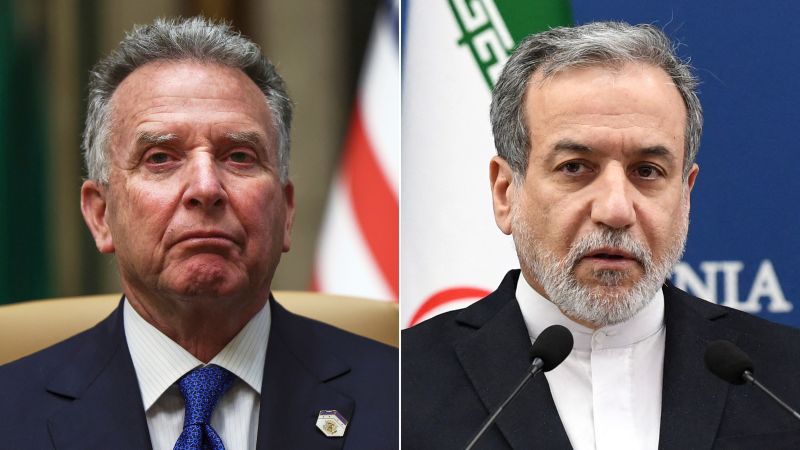CNN
—
King Charles and Queen Camilla paid a surprise visit to Pope Francis as he recuperates at the Vatican on Wednesday during a state visit to Italy that coincided with the British royal couple’s 20th wedding anniversary.
The pope met privately with the royals, the Vatican said in a statement.
“During the meeting, the Pope expressed his good wishes to Their Majesties on the occasion of their wedding anniversary and reciprocated His Majesty’s wishes a speedy recovery of his health,” the Vatican said.
Buckingham Palace confirmed the meeting, saying that the couple “were delighted the Pope was well enough to host them – and to have had the opportunity to share their best wishes in person.”
The 88-year-old pontiff has been recovering from a life-threatening bout of double pneumonia that landed him in hospital for five weeks in February and March. Charles, meanwhile, has been battling cancer since last year.
Wednesday’s meeting came as a surprise after the palace announced last month that the royals had postponed a planned state visit to the Vatican to offer the pope more time to recuperate.
A royal source told CNN on Wednesday that Francis had extended an invitation for a private audience to Charles and Camilla after their official visit was canceled, but that the meeting was subject to the pope’s health and only confirmed on Wednesday morning.
The meeting took place on Wednesday afternoon after Charles became the first British monarch to address both houses of Italian parliament. It lasted around 20 minutes and it is understood that the pope took the opportunity to wish the couple a happy anniversary.
The encounter was the third time Charles and Francis have crossed paths – though it was the first since the King’s coronation. CNN understands there was an exchange of gifts, and Charles can be seen holding a small red box in the photo of the meeting released by the Vatican on Thursday.
Charles previously visited the Vatican in 2019 for the canonization of Cardinal John Henry Newman, the first Englishman to be made a saint since 1970. He also traveled to the Holy See with Camilla in 2017.


Earlier this week, Francis appeared to be in good spirits at his first public appearance since being released from hospital just over two weeks ago.
The pope smiled as he greeted crowds in the Vatican on Sunday, sitting in a wheelchair and wearing what appeared to be a nasal cannula to help with his breathing.
In a photo of Francis greeting the royal couple on Wednesday, the pontiff was not wearing the breathing aid.
GET OUR FREE ROYAL NEWSLETTER
• Sign up to CNN’s Royal News, a weekly dispatch bringing you the inside track on the royal family, what they are up to in public and what’s happening behind palace walls.
Charles and Camilla are in Italy on a four-day state visit. They received a full ceremonial welcome on Tuesday, meeting President Sergio Mattarella at the Quirinale Palace before viewing a fly-past by aerial acrobatics teams from the Italian and British air forces.
Earlier Wednesday, Charles met Italian Prime Minister Giorgia Meloni.
The final day of the trip has a literary theme to it. The royal couple will relocate from Rome to Ravenna in northeastern Italy on Thursday, where they will visit the tomb of Italian poet and writer Dante Alighieri, before Camilla tours the Byron Museum to explore the Romantic poet’s life in Italy. The state visit will conclude with a final engagement at Ravenna’s market in Piazza del Popolo, where they will attend a food festival and meet local farmers and producers.
The trip comes less than two weeks after Charles was briefly hospitalized after experiencing “temporary side effects” from a scheduled cancer treatment, according to the palace. While causing him to cancel a day’s worth of engagements, the King’s experience was not out of the ordinary, according to a royal source, and he appeared to recover quickly.
In February last year, Charles revealed he had been diagnosed with an unspecified form of cancer and stepped away from public duties for several months for treatment. He resumed official engagements in April last year after doctors said they were “very encouraged” by his progress.























